Maggie Holman's Blog
September 25, 2025
One Moment in One WW1 Soldier's War
Back in 2022, I wrote a previous blog post about my Grandad - who I'll refer to as Jack - and his WW1 experiences. My research basically dispelled the family myths about him, and with some help at the time from research officers at two relevant museums - the Fusiliers Museum in Bury and the Passchendaele 1917 Memorial Museum near Ypres, Belgium - I was able to get a more factual perspective on where he was and what he did. In 2024, some further, more in-depth information came to light which broadened my research, gave me a more detailed picture and led me along the route of 'I think there's a book in this'.
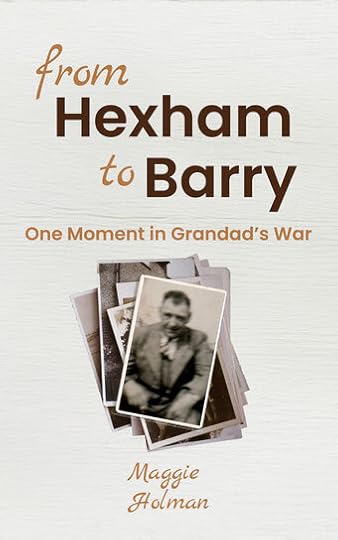 //
// New Information Comes to Light
In May of 2024, I received an email from Simon Augustyn, a research officer at the Passchendaele Museum near Ypres. It was Simon who had previously helped me with the information which clarified that Jack's battalion - the 15th Lancashire Fusiliers - had not been at the Battle of Passchendaele and were instead on defensive duties on the Belgian coast.
However, Simon explained that he had looked again at Jack's information, and instead of focussing on 1917, which we had done when we communicated previously, he looked ahead into 1918. It transpired that, at the end of 1917, the 15th Battalion had ended their coastal defence duties and been sent to the Passchendaele area. This was because although the main battle was considered to be over in November 1917, there were still pockets of fighting between the Allied forces and the Germans forces who were dug in there.
Below: The regimental war diary entry for the Moonlight Massacre campaign. Courtesy: UK National Archives
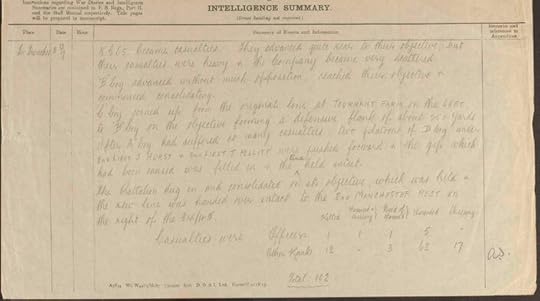 //
// The Moonlight Massacre
On the night of the 1st/2nd December 1917, troops from a wide range of different regiments took part in a campaign at Westrozebeke, on the Ypres salient. To gain territory to use for observation, the plan was to send a force 'en masse' to rush forward and overrun the German lines there. The attack was scheduled at 1.55 am, with no advance artillery bombardment, to maintain an element of surprise.
Officers voiced concerns about the unlikelihood of the plan's success, for a number of reasons. Firstly, the chosen night was two days after a full moon and the night sky was still very bright. Secondly, the ground was muddy, waterlogged and frozen. The Passchendaele battle had destroyed the landscape and there was no cover or shelter for the advancing troops. Instead, they had to walk along broken, slippery duckboards to cross the treacherous terrain. There was no way to 'rush forward and overrrun'.
All concerns were ignored and the attack went ahead. It was a disaster. There was no element of surprise. The bright moonlight made the troops visible when they were still two hundred yards away, and they were easily mown down by German machine gun fire.
Soldiers scattered everywhere in panic, to
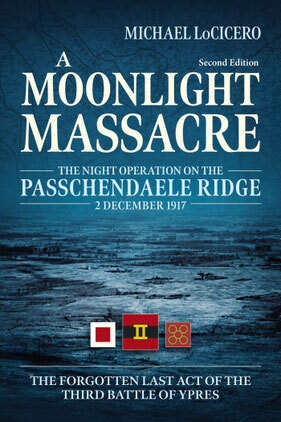 //
// to try to protect themselves, and the objective was not achieved. There was a catastrophic loss of life. Jack's battalion is recorded as taking part in this campaign, and so it can be assumed that he was there.
Very little seems to have been written about this campaign, as if it was 'brushed under the carpet' of British military history. I found only one piece of written material, a Ph.D. thesis by Michael LoCicero.
Below: The regimental war diary entry for the raid of 17.2.1918. Courtesy: UK National Archives
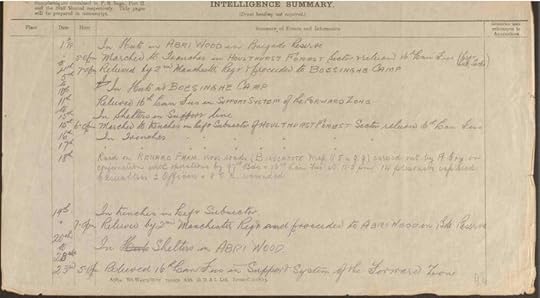 //
// February 1918
With further help from Simon Augustyn, the details emerged about how Jack was wounded. During a small-scale raid to take prisoners on the 17th February 1918, he received a bayonet wound and a gunshot wound. Again, it has to be assumed that he was part of this raid, because 17th February is the date noted on his casualty sheet, and it is also the date of the only activity noted in the regimental war diary. Being wounded, and sent back to England to recover, began the journey and choices he made which got him into trouble.
The Book: 'From Hexham to Barry - One Moment in Grandad's War'
After recovering from his wounds and being given ten days leave, Jack travelled to Barry, in Wales, to join a reserve battalion. What happened next is described and explored in the book From Hexham to Barry - One Moment in Grandad's War. A book of two parts, the fiction section speculates on what he did, 'filling in the gaps' of what was missing from what I found in my research, and a second section consists of a 'mini-memoir' of the facts behind the story. While writing the book, I contacted Barry War Museum, and was given various articles and photos which helped steep me in what Barry was like in 1918.
Conclusion
The initial research for the 2022 blog post brought me closer to the Grandad I never knew, in what I thought was an 'interesting' way; a 'Oh, I didn't know that' or 'So that family story wasn't true after all' kind of way. The further research, which resulted in the book, has done much more. This time round, I feel a more empathetic connection between what happened to my Grandad, and how/why he reacted as he did. The broadening of that emotional connection to a wider context just reminds me of the horror of the actions, consequences and implications of war, and how unless mankind finds another way, it seems to be never-ending.
*
Find out more about my book at these two internal weblinks: Books and The Family History Fiction Project
From Hexham to Barry - One Moment in Grandad's War is available in paperback and as an ebook at Amazon. Follow this link: amzn.to/46cAleC
Social media:
Facebook: maggie.holman.90 & maggieholmanwriter
Instagram: runjumpjive
Twitter: @runjumpjive
#books #fiction #memoir #reading #history #war #WW1 #FirstWorldWar #familyhistory #familyhistoryresearch #YpresWW1
April 13, 2025
Christophe Plantin: Antwerp's Sixteenth-Century Publishing Entrepreneur
I was looking for places to visit on a recent trip to Antwerp, and the Museum Plantin-Moretus came up in an online search. It seemed to be about an Antwerp printing company, and the information contained several references to it housing a variety of large book collections. Being more interested in the writing and reading of books, I was less-enthused about the printing of them, but decided to give it a go, since the tourist reviews were very good. I'm really glad I did! What I discovered wasn't just a homage to the early days of printing, but a fascinating story about the vision of an early Antwerp entrepreneur and the contribution he made to both the history of printing and the creation of a stable and secure future for his family.
 //
// Plantin Arrives in Antwerp
Christophe Plantin didn't start life in Antwerp. He was actually born in France, probably near Tours, in about 1520. After a bookbinding apprenticeship and a small business venture in Paris, Plantin and his wife relocated to Antwerp, which at the time was a booming entrepreneurial city with much more potential for the couple's plans. Their large property at Vrijdagmarkt 22 became the centre of their family and business world, and now houses the Plantin-Moretus Museum.
 //
//  //
// The Plantin-Moretus Museum
When I entered a door on the corner of the Vrijdagmarkt, I had no idea of the scale of the house waiting inside. Its huge expanse is hidden from the street. The residential part of the house includes the living rooms and a luxurious library. They illustrate, to museum visitors, the success of Plantin's business. On entering the first two rooms of the museum, I discovered portraits of different members of the Plantin - and later Plantin-Moretus - family on the walls, alongside furniture and trimmings of his day.
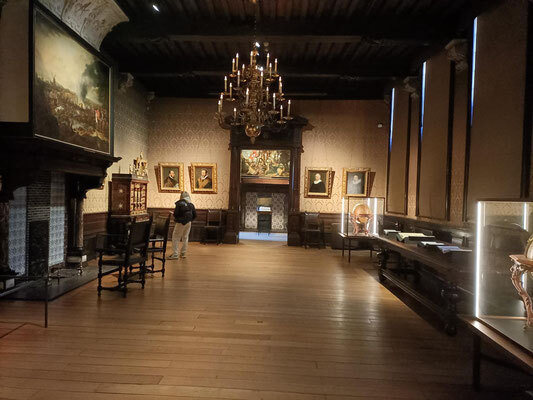
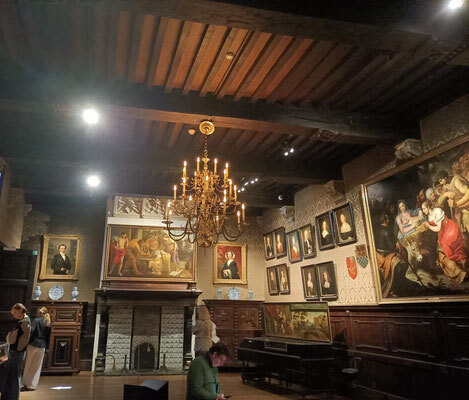

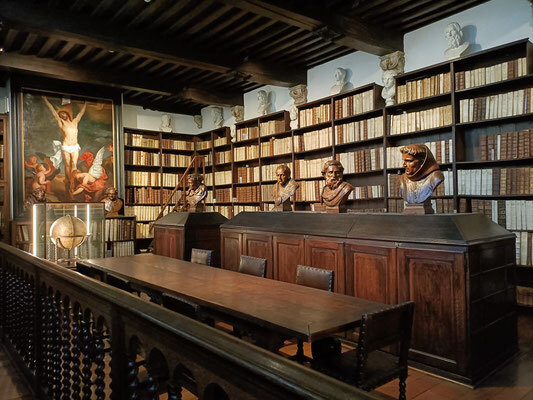 //
//
Following the route, I next found myself in an enclosed courtyard garden. The size of the house now became even more apparent, as it surrounds the garden on four sides. The garden is landscaped in a formal style and is simple, not ornate, but it creates a beautiful suntrap. Here, members of the Plantin family could relax in private, undisturbed by people walking by in the street.
 //
// However, as I walked deeper and deeper into the Plantin-Moretus house, the more the ingenuity of Plantin and his descendants became apparent. Not only was this their family home, but it was also the heart of their printing business. The business was hugely successful, employing the many staff who were needed in order to follow the various steps of the printing process, from hand-made fonts to the finished text.
The Foundry
Plantin bought his letter sets from contemporary designers such Granjon, Garamont and van den Keere. Many of these formed the basis for fonts that are used today. For example, the Modern Times Roman font is based on Granjon's work. However, Plantin also bought the punches and matrices which were used to make the letter sets. This prevented other printers from using them, so giving him ownership of the typeset materials and making his letter types completely exclusive. In the foundry, skilled metal workers could repair and replace typeset for the busy printing workshop, using processes which actually survived right into the twentieth century.
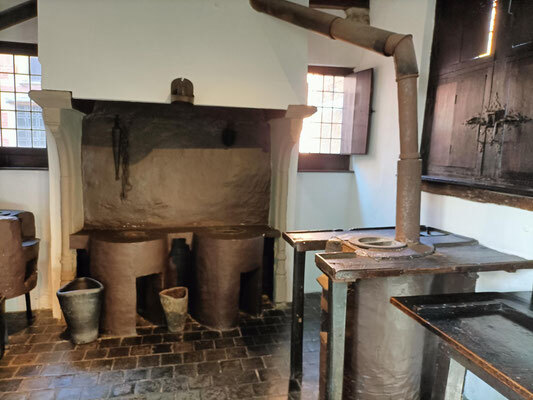

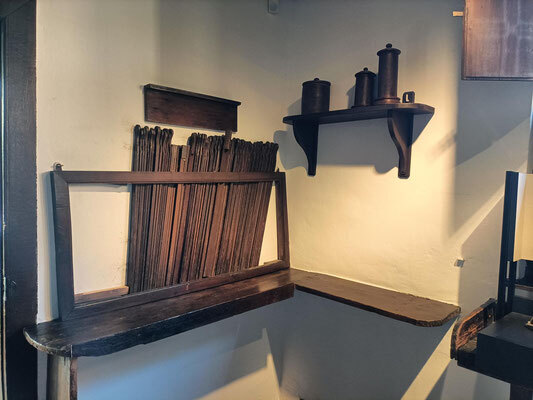
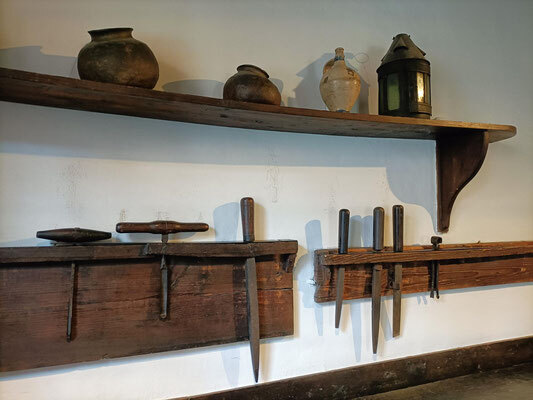 //
// The Typeset Room
Before arriving in the room where everything came together - the printing room - I stopped in the typeset room. This room houses specially-made shelving which holds the many different sets of type that Plantin's business required, depending on the subject matter and design of each book. This storage was an efficient way to organise, separate and easily find each typeset, keeping this important part of the printing process away from the hustle and bustle of the printing room itself.
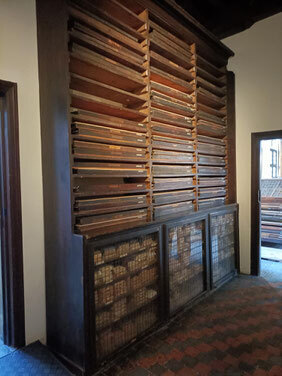 //
// 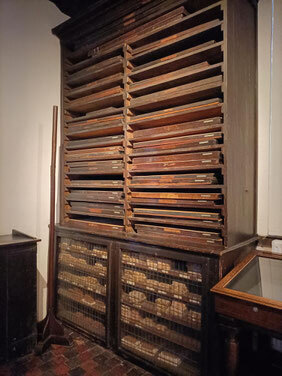 //
//
The Printing Room
Imagine the noise! The printing presses would be creaking and clattering over and over again as the printers worked to fulfil the company's orders. At the height of Plantin's business, he owned twenty-two presses and employed over eighty people. A huge operation for the time! The printing room is long and narrow. On one side are examples of the printing presses. On the other are rows and rows of typeset, so visitors can see examples of the type choices Plantin used, but in its heyday, every available space in this room would have been given over to the printing machinery.
 //
// 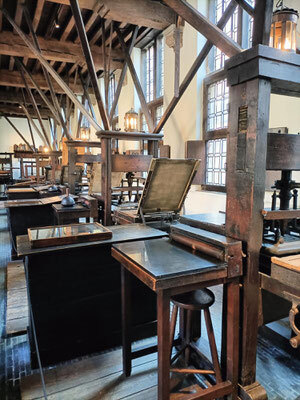
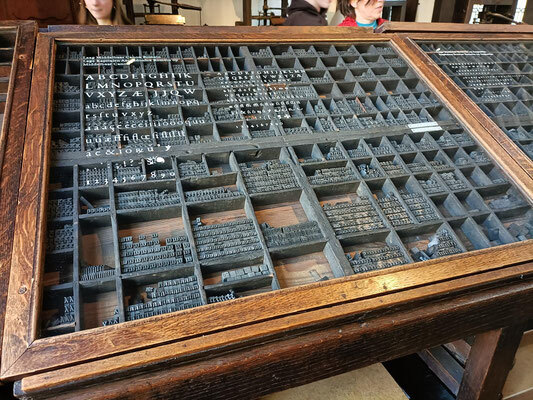
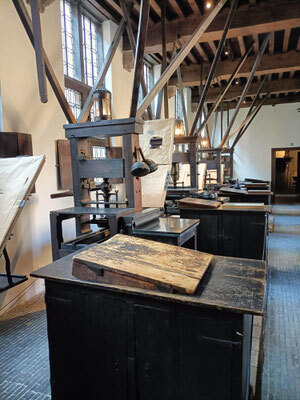 //
// 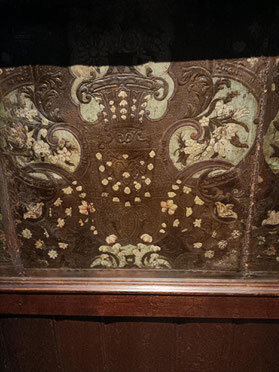 //
//
The Office
Plantin's office, which was also used by subsequent owners and managers, is devoid of the grandeur and size one might expect for a successful CEO. It is surprisingly small, plain and functional. Was Plantin simply being practical, taking only the space he needed and nothing more, and giving every possible space to the needs of the printing work? However, instead of inviting customers into a large and opulent office, Plantin used the decoration on the office walls as a symbol of his status. They are completely covered in decorated leather tiles, which were a luxury at the time that only the very wealthy could afford, and this showed customers the financial strength of Plantin's company..
 //
// The Proofreading Room
In this room, employees sat together around a table to check the printed text before it could be delivered to customers or put in the shop for sale. It's in this room that Plantin's dual plan for business and family is illustrated. Plantin's five daughters - Marguerite, Martina, Catherine, Madeleine and Henrica - were all educated from an early age and expected to work. At a time when women were generally taught only housekeeping skills, and destined to become wives and mothers within marriage arrangements which were often used for political or financial gain, Plantin employed his daughters in his printing business. This decision not only benefited his business but also gave the girls opportunities which were unusual for the time. One of their tasks was working in the proofreading room. As one person read each text aloud, others followed it in print and looked for errors. This was no mean feat. Many of the texts were printed in several languages, including Latin.
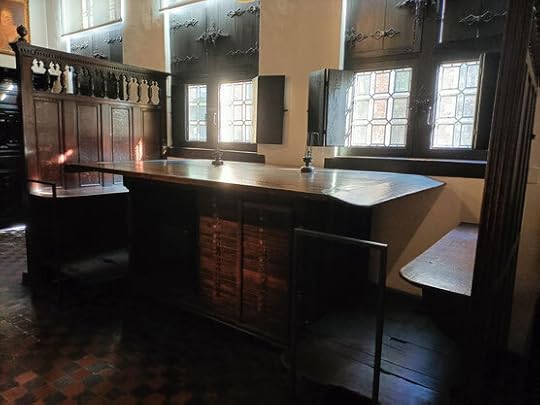 //
//  //
// 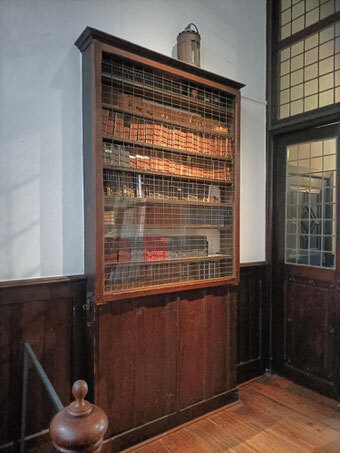 //
//
The Bookshop
As reading skills developed and the reading population increased, there was more and more demand for books. Plantin's company premises wasn't just a factory. It also contained a shop in which customers could browse through the various books on offer. After all the planning, typesetting, printing and proofreading, this is where Plantin's books were made available to prospective buyers.
In the photo of the shop bookshelves (left), you can see that all the books look exactly the same; there are no spines with titles on them to identify an individual book. This is because only the internal content of the books was sold here. Customers then had to go on to a bookbinding company to have the covers and spines added to them. This was common practice in the world of early book publishing.
Because Plantin printed books in many academic fields, there must have been some interesting conversations going on at the bookshop counter!
Books everywhere!
Plantin's success in business was not confined to Antwerp, or even to Belgium. He secured contracts to publish maps, bibles, botanical books, medical and other educational books, sheet music, calendars and almanacs which were delivered to locations across the world. Over fifty per cent of scientific books of the time were being printed by his company. Walking through the museum, its possible to see many of these original books, organised by subject, and either contained in bookshelves or in the many glass display cases.
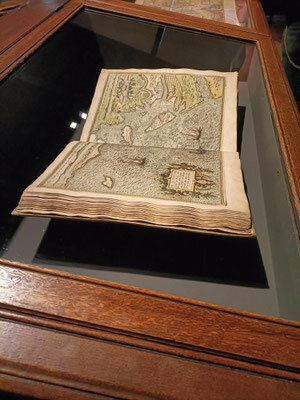
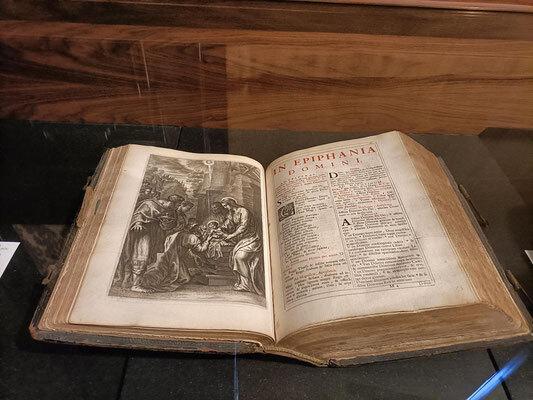
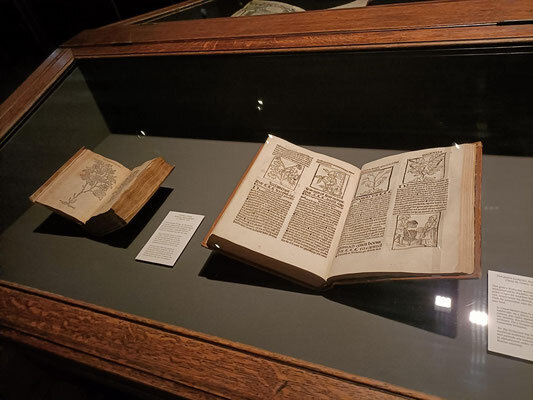
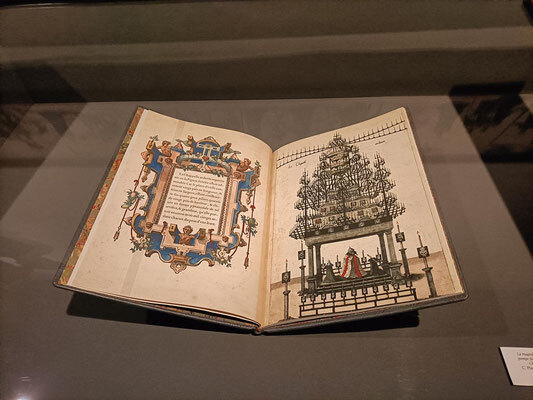
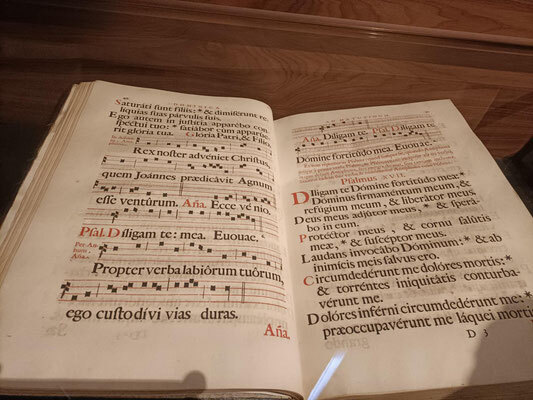

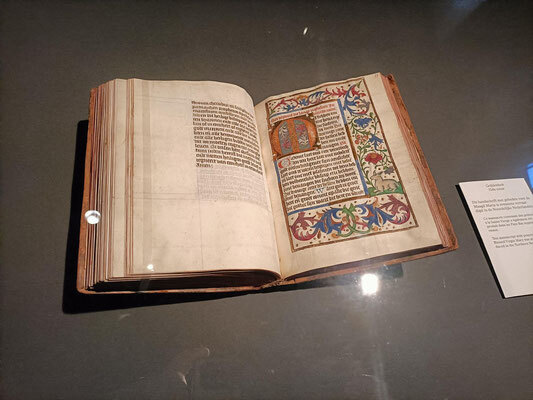 //
// Printing the Bible
The Pope gave his personal seal of approval to Plantin's bibles (see left), and Plantin insisted on printing bibles in five languages - Latin, Greek, Hebrew, Aramaic and Old Syriac - so that scholars could experience bible study in all its original forms. As with the education of his daughters, this decision illustrates how Plantin was not just a businessman, but that he also felt strongly about people having access to education and knowledge.
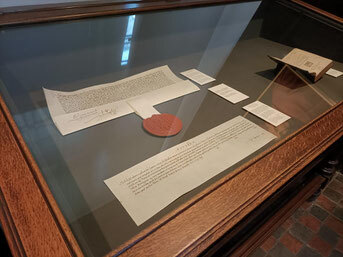 //
//  //
// 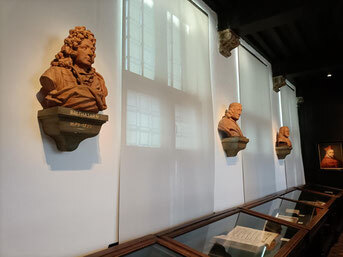 //
//
Plantin's Legacy
At the end of the museum tour, the final room gives an indication of the scale of what Plantin created. The busts on the walls are all of descendants of the family. When Plantin died, the business was passed on to his son-in-law, Jan Moretus. In total, the house and printing business at the Vrijdagmarkt became home and workplace for nine generations of the Plantin-Moretus family, until it was sold to the city of Antwerp in 1876. Plantin's descendants had the foresight to keep all the books, typeset and equipment spanning over three hundred years of printing, and the city of Antwerp immediately made this collection available to the public and to scholars alike. In 2005, the museum was inscribed onto the UNESCO World Heritage list for its contribution to printing history.
I'm really glad I took the time to visit the Plantin-Moretus Museum. It proved to be a fascinating insight into one man's vision not only as an entrepreneur, but as someone who valued education and the newly-developing written word for his family and for the wider reading public.
*
The Plantin-Moretus Museum is located at:
Vrijdagmarkt 22,
2000 Antwerp,
Belgium
Tel: +32 (0)3 221 14 50
Go to the museum's website for all visitor information:
https://museumplantinmoretus.be
#books #printing #bookpublishing #reading #academia #history #christopheplantin #plantinmoretusmusem #museums #antwerp #antwerpmuseums #belgium #belgianmuseums
February 19, 2025
A Boy, A Bat & A Picture Book
My published work and the hundreds of new projects I've either started, planned or are 'in progress' have always been for older readers, from upper primary children to teens and adults.
During the years I was teaching in school, my colleagues from the reception and early years classes often asked if I was planning to write any picture books for their age group. I can't say why I hadn't explored this area of storytelling. Ideas come, I always find, and you have a feel for their genre and age group. Perhaps there'd never been a story or a moment that I wanted to explore that warranted a picture book format.
Until now, that is, when suddenly the idea came easily, the time seemed right and there was a certain 'synchronicity' between my words and the visual ideas of my friend and illustrator, Kirsty.
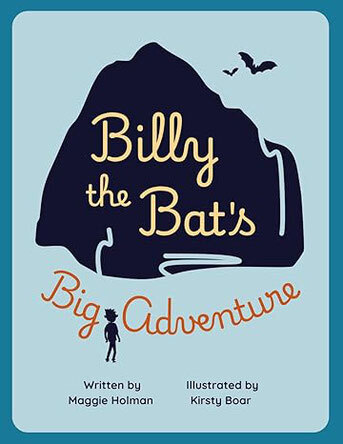 //
// The Inspiration
There was always a little anecdote in our family involving a boy and a bat. As a child aged about ten or eleven, my husband Dave went to play in some beach caves.
'His name was Dave. He was a boy with a curious mind,
He liked to look for new things, and here's an interesting find!'
The interesting find was a little bat, lying on the cave floor. Dave took it home, where he hid it in the bathroom cupboard. I'm not sure what his plan was, but it ended quickly when his Mum opened the cupboard to get a towel and the bat flew out and gave her a fright.
'"You're safe in there," said Dave, "It's warm and feels just right."
But when Mum went there to fetch a towel, they both got an awful fright!'
At the back of my mind, I think there was always a possible storyline here, but it took twenty-eight years to come to fruition. On a sunny day in August 2024, while I was babysitting and my grandson was having his afternoon nap, I put the rhyming text down on paper. The result is Billy the Bat's Big Adventure.

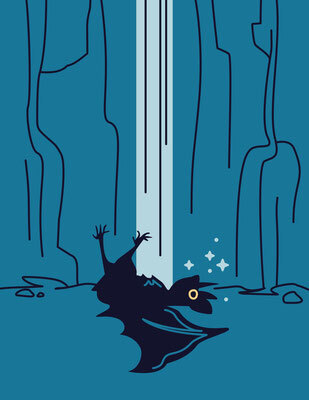
 //
// Words and Pictures Come Together
When I arrived back home, Kirsty and I began to discuss the visuals for a picture book. I've previously worked with Kirsty on the black and white line drawings for my children's books Footprints in the Snow and Save the White Stag, and I was curious to see how Kirsty envisaged the images for this idea. I wasn't disappointed! Her bold and colourful drawings, which each fill a whole page, are perfect to help small children understand the story as it progresses.
How did Billy escape?
In reality, the bat flew out of the window after flapping around in the bathroom. Kirsty and I wanted this to be a really funny moment.
'And when Billy saw his chance, like
a Super Bat in a cape,
He aimed for the bathroom window
and made his escape.'
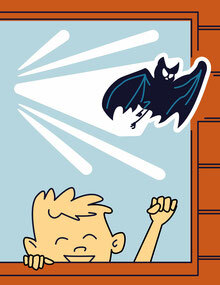 //
// The Book's Launch
By October, Billy was ready to go public, and just in time for Halloween too. As well as visiting a local creative market - armed and ready with Halloween Haribo candy - I also read the book at the English storytime at my local library and at my regular after-school club. We had a lot of fun cutting and sticking to produce bats that could fly around and follow the actions while we read the story together.
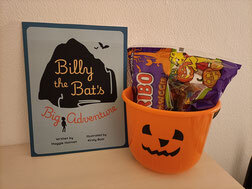 //
// 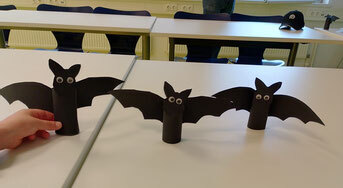 //
// Billy in the Classroom
Thinking back to those questions from my colleagues, I thought about how the story of Billy the Bat's Big Adventure could have a place in reception and early year classrooms. Hopefully it's a funny story for snack time or at the end of the day, but on a more serious note, Dave should never have taken Billy home at all. We should respect the animal kingdom and leave all animals in their own environment. The story could be used to instill, in young children, the concepts of animal welfare, respect and care.
The story could also be a resource for teaching children about the seasons, hibernation, habitats and the world of bats in general. For example, I always thought that the bat Dave found had fallen on the floor, but Kirsty pointed out that, apparently, a bat's talons 'lock on' to its resting place and have a way to maintain this hold, so how did Dave's bat end up on the floor? Further research revealed that sometimes, in the hundreds or perhaps thousands of bats that are jostling for their hanging space, the smaller, younger bats can be pushed around and sometimes knocked right off. The book text had to be edited to stay true to this real bat fact.
'The neighbour-bats, they wriggled as they settled down to sleep,
And he dropped to the floor in a little batty heap.'
A Final Word
It took a while, but my first experience of writing a picture book has finally arrived. I didn't realise what a lot of fun it would be, during the writing, the book's development and especially the interaction with young listeners afterwards. Hopefully, there are more picture book ideas waiting 'in the wings'!
*
Find out more about Billy the Bat's Big Adventure at www.maggieholman.com/books. The book is available as a paperback and e-book at all Amazon stores. This is the link to the books at Amazon UK: bit.ly/3MOcqsC . It's also available at bookstores and at selected UK libraries.
#books #fiction #reading #picturebooks #rhymingtext #funnybooks #childrensbooks #bats #animals #seasons #hibernation #habitats #schools #primaryschools #internationalschools #KS1 #PYP #teachers #receptionclass #earlyyears #nature #thenaturalworld
July 28, 2024
People & Books #16: Lloyd Miner
Lloyd Miner is an author and playwright. His fiction and non-fiction has been published in the US and Europe, and his theatrical work has been performed in London, New York and Sydney. I first met Lloyd when we were both members of the Amsterdam Critiquing Group. We each left Amsterdam for two entirely different parts of the Netherlands, but we still meet regularly for critiquing sessions at the Writers aan de Waal group.
I'm excited to be able to interview Lloyd about his writing and about his development of the Writing Grove, which offers courses in a broad range of writing genres.
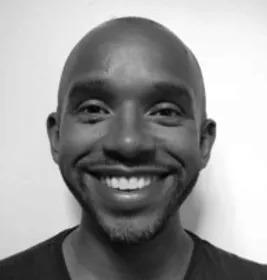 //
// Who/what inspired you to begin writing?
The inspiration came from reading, specifically in Latin. In grade school, I started studying Latin and enjoyed translating. Ovid and Virgil were favourite Latin writers. I liked looking at the technicalities of language and trying to understand the plot and theme. It was thrilling to look at stories of gods and goddesses and analyse the mechanics of language. I had a translation of a Latin poem published when I was in high school.
Later, I did a film degree in New York City and intended to move to LA to become a screenwriter or director, but then life happened, and I moved to Australia. There, I studied playwriting with Hilary Bell, a famous playwright. Fiction came after I moved to the Netherlands and started participating in writing workshops.
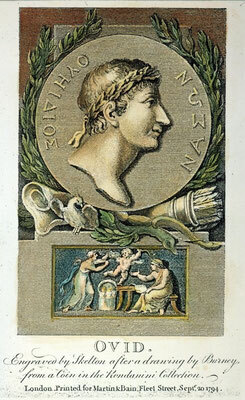
 //
// Which authors do you admire?
Joyce Carol Oates, Patricia Highsmith, Danez Smith, Ovid, Virgil, Murat Isik. I’m also into Sally Rooney lately.
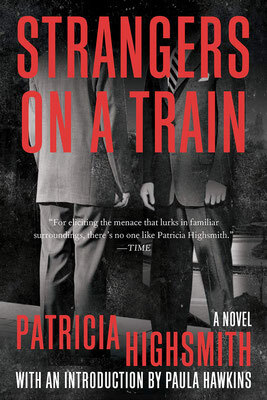
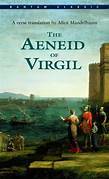

 //
//  //
//
Have you been influenced by any particular books you’ve read?
Blonde by Joyce Carol Oates. It’s an epic work that draws on many elements – the fantasy and horror genres, film, obsession with celebrity. It also really creates a living, breathing main character.
How many books have you written?
One novel, two full-length plays and a slew of one-act plays and short stories. Some of the short stories have been published, and I’m looking for an agent for the novel.
What inspires you to write?
I keep a digital journal of ideas and news articles. Many times, the ideas are a combination of both. The first novel I wrote is a detective story with a political subplot. The whole idea came from a speech I watched many years ago that I couldn’t stop thinking about. Inspiration often happens when you don’t realise it. The ideas that stay stuck in your mind are always worth pursuing.
Do you have any particular writing habits or routines?
I always start with character: biography, physicality. I spend a lot of time working through them as people, and then I can start seeing what happens to them in certain situations. This is probably because of my film and theatre training. In those media, everything is about transitions – i.e. how is this next scene different from the previous one?
When you work with actors, you see how they approach change – they take a script and imbue it with physicality, and over the course of two hours, they often transform themselves. Actors are magic. And I often think about my characters as if they were in a play.
In terms of process, I like to outline. I tend to write complicated, multi-character stories, so I need to keep track of everything. The outline also helps me look at the larger story.
What are your future writing plans?
I would love to sell the first novel and finish the second. Also, I would love to experience the whole process of writing, producing and directing a play!
What are you working on at the moment?
I’m working on the second novel and setting up the creative writing centre in Italy. I also have a blog that I write about travel and writing.
 //
// What inspired you to set up the creative writing centre in Italy?
The pandemic. A friend recommended I visit Puglia, and during one of the reprieves from lockdown, I went and fell in love with a town she recommended. I have always loved being in workshops and writing groups. I wanted to recreate this in Italy – giving people a chance to see a part of the country that isn’t well-known.
I also believe it’s essential for writers to commune with other writers in person. Retreats can foster camaraderie and great energy. After the pandemic, I decided to seek out experiences and focus more on the social aspect of writing. Put all three ideas together, plus the fact that I couldn't find anything similar, and I decided to set them up myself.
The first retreat was held in November 2023, then we held another in March this year and there'll be another in the autumn.
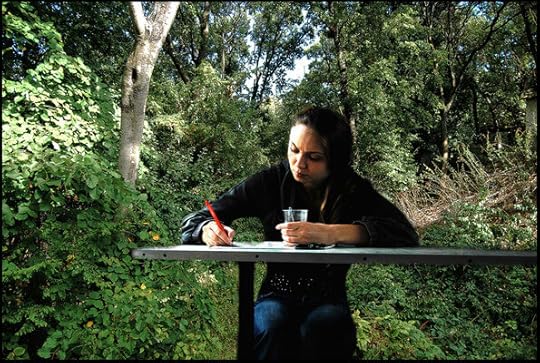

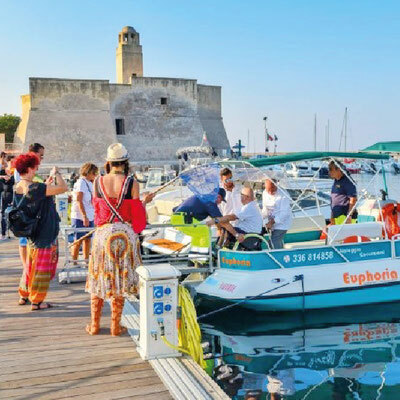 //
// How is the retreat organized and what can prospective visitors expect?
The retreat is a blast! The key objective of the week is to create a fully-realised, revised scene critical to the writer’s story. We start with deep character work – creating three-dimensional characters in the scene. Then we work on the scene setting, conflict and structure. Each day has a theme and builds on the previous day’s work.
It’s a retreat, so there are also fun activities, excursions, excellent Italian meals together and downtime. “Piano, piano,” the people in the town say. “Take it slow.” A retreat is also a holiday: the writers need time and space to themselves. The last thing you want is to be exhausted at the end of it.
Regarding location, the writers stay in a fabulous 900-year-old palazzo that’s a destination in its own right. The rooms are large and comfortable. It’s such a great space to write in. The palazzo is in a small city near the sea – lively, but also relaxing and safe. It’s the perfect week for writers to give themselves the gift of working on their craft, being present in the moment and having a digital detox.
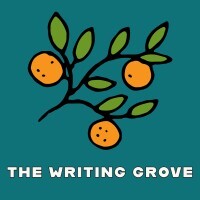 //
//
Where can people find details about the retreat?
They can visit my website, www.writinggrove.com or email me at lloyd@writinggrove.com.
Finally, do you have any tips for new writers?
I have two:
1. Understand your characters first. Write their biographies, interview them, how (if) they vote, and what they eat. The more detail you have about them, the more situations you can put them in. It’s also great fun to learn and invent. Even if they’re 'bad' people, they can be interesting.
2. Join a writing group where you receive and give honest feedback. In addition to helping you improve your craft, you’ll be less alone.
*
Find out more about what the Writing Grove has to offer at www.writinggrove.com
Social media:
Facebook @ thewritinggrove
Instagram @ writinggrove
and
Writers aan de Waal @ Facebook.com/writersaandewaal
October 19, 2023
People & Books #15: Shelley Wilson
If you're looking for a supernatural read in the run-up to Halloween, why not check out some of Shelley Wilson's YA novels? I first met Shelley at a self-publishing conference back in 2015. Since then, Shelley's path as a writer has resulted in an extensive collection of YA fiction, alongside her non-fiction books about subjects such as well-being, meditation and business writing. Here Shelley talks about her creative path, what inspired it and how she manages the different aspects of her work.
 //
// Who or what inspired you to begin writing?
I followed Enid Blyton up a Magic Faraway Tree and I’ve been up there ever since! I adored reading when I was a kid and devoured book after book. Even at the age of 8 I knew I wanted to be an author one day.
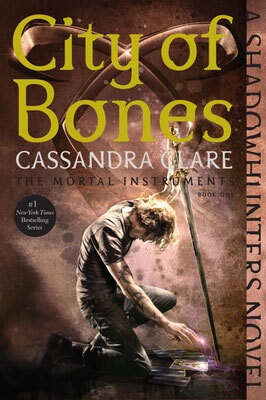
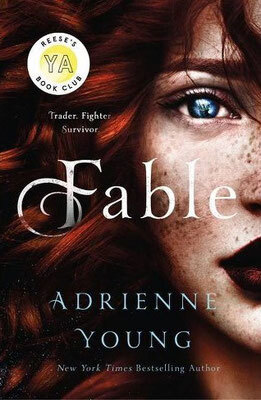
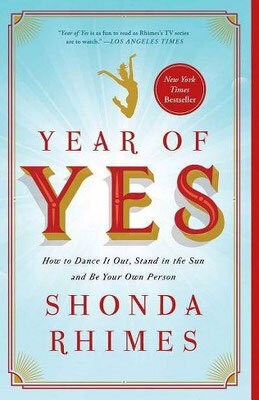 //
// Which authors do you admire?
Oh blimey, that’s a tough question as there are so many incredible authors out there. As an avid YA (young adult) reader and author, I must include Cassandra Clare, Sarah J Maas and Adrienne Young. From a non-fiction point of view, I admire Elaine Kasket, Johann Hari and Shonda Rhimes. They all have their own unique way of weaving words and inspiring their audience.
Have you been influenced by any particular books you’ve read?
I think every book I’ve read has influenced me in some small way, whether it’s deciding which genre to write in or making changes to my life and business following an author's sound advice. That’s the beauty of a good book. We never know what impact it will have on us.
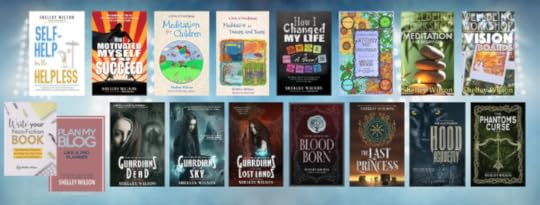 //
// How many books have you written?
I’m currently working on my twenty-first book at the moment. I’ve written nine novels, nine non-fiction books, and two planners. The one I’m working on now is another novel in a different genre than my usual books. It’s going to be a fun challenge!
What inspired you to write these books?
The inspiration for my first book (How I Changed My Life in a Year) came from a desire to write, but I'd never prioritised my passion for writing. I was running my holistic health spa then and telling my clients they could do anything if they just believed in themselves. I wasn’t taking my own advice, so I started a New Year resolution challenge and blogged about the entire process. After twelve months, I turned the blog into a book, and it shot to the top of the self-help chart on Amazon.
It was like the floodgates opened and I couldn’t stop writing! My YA novels were inspired by the challenges I went through as a young adult and watching my three kids navigate their teenage years with similar issues. I wanted to create strong, confident protagonists – something I never was as a youngster.
My writing mentor clients inspired my planners and one of my eBooks. When I’m not working on my titles, I help women in business to write their business books to boost their visibility and create more opportunities.


 //
// Have you explored other formats e.g. poetry, short stories, graphic novels?
Not really. I loved writing short stories when I was younger and have had a couple of stories published in anthologies, but I love the meaty task of outlining and writing 50k words or over.
Why did you decide to self-publish?
I started self-publishing my first few books in 2014 and loved the process and freedom. At that time it never occurred to me to approach a traditional publisher. I liked the idea of being in control. In 2017, I signed with BHC Press, who produced most of my later catalogue, although I still self-publish a few titles.
How do you feel about the self-publishing process?
I think it’s a wonderful way for writers to reach an audience. However, I would always recommend that any self-publishing author undergo a rigorous editing process and invest in cover and interior book designers. Your book represents you (and your brand) and needs to be the best it can be and comfortably stand shoulder-to-shoulder with a traditionally published title.
You write both fiction and non-fiction. How do you balance your time and planning between the two?
I tend to work on my fiction book one year, then a non-fiction title the next, and keep rotating. It was hard when I had to follow a publishing schedule as sometimes I wasn’t ‘feeling’ the topic, so I had to work extra hard on the motivation and mindset side to hit my deadlines.
What are you working on at the moment?
I’m having a go at writing in a new genre, but I’m not quite ready to admit it yet! It’s fun playing with new characters and unusual ideas, so I’ll see where this goes, and if it works out, I’ll let you know.
 //
//  //
//
What are your future writing plans?
I have another Viking novel waiting in the wings as well as a non-fiction book about my solo travels in Snoopy, my VW Campervan.
What do you enjoy most about writing?
All of it! I love getting the spark of an idea and sitting with it for a while. I then enjoy plotting the book and getting my coloured pens and Post-it notes involved. When it’s finally time to write, I love falling down that rabbit hole and becoming a living, breathing part of the book.
Of course, one of my favourite parts of writing is when you receive amazing feedback from readers, and you know all the blood, sweat and tears were worth it.
 //
// 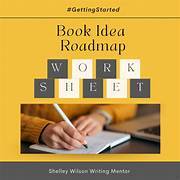
Do you support any writers or aspiring writers e.g. through creative writing workshops, feedback services and so on?
My business is Shelley Wilson Writing Mentor, where I am lucky enough to support new writers on their book projects. I predominantly work with women in business, but I have had clients working on children’s books, journals and memoirs. My favourite topic is self-help and personal development, as this was my background. My services include 1:1 mentoring, 8-week group programmes, workshops and resources.
//Do you have any particular writing habits or routines?
I always outline my books using pen and paper and then type my manuscripts directly to my computer. Every book I begin must have its own notebook for notes and ideas, and the notebook has to be squishy (I’m not a fan of hardback notebooks).
Do you have any tips for new writers?
If you’re thinking of writing a book, take a good look at your calendar and environment. Do you have the time, mindset, energy, support and dedication to take on this task? I see so many people rush into writing only to burn out after a few months (or chapters). Set goals, set a deadline, plan out your ideas and be fiercely loyal to your writing time.
*
Shelley's books are available at all online platforms. Find out more about Shelley and her books at https://linktr.ee/ShelleyWilson72
October 3, 2023
Which Spooky Fiction Will You Dare to Read in October?
As a fantasy and paranormal author, October has to be my perfect month of the year, culminating in Halloween and the Day of the Dead on November 1st. Of course, this world in which I love to read and write exists all year round, but October is the time to focus on such things as ghosts, goblins and things that go bump in the night! To celebrate all things supernatural, here is my round-up of my five favourite scary stories!
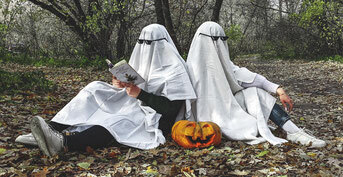 //
// photo by Vadim Bogulov @ Unsplash
Number 1: A Skinful of Shadows (Frances Hardinge)
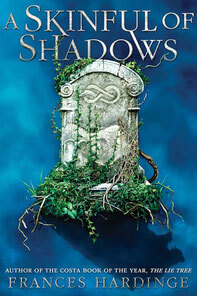 //
// If I had just 10% of Frances Hardinge's imagination, I'd be happy. She has an amazing ability to create detailed worlds within the real world which send tingles up anyone's spine. A Skinful of Shadows is a wonderfully delicious story set against the backdrop of the English Civil War. At the start, Makepeace's mother continually locks her in a graveyard overnight, in an effort to help her learn to stop ghosts from getting inside her. What is going on? Is her mother just plain mad? As the story unfolds and Makepeace is sent to live with her father's family, the terrible truth of the reason for this skill unfolds, and Makepeace finds herself drawn into a battle for survival with both the ghosts of her ancestors and the real armies and politicians who are fighting for control of the country. A must-read for lovers of creepy and sinister stories.
Number 2: The Children of Green Knowe (Lucy M. Boston)
I read the Lucy Boston stories of the old manor house at Green Knowe again and again as a child. The first book, The Children of Green Knowe, is now a classic among children's ghost stories. At the start, the main character, a young boy called Toseland (Tolly) has to get to the house by rowing boat because of the recent floods - in the dark too! - and so the Gothic, atmospheric setting of the story is immediately established. Tolly proceeds to spend his time there with only his great-grandmother for company, but he quickly realises he's not alone, and that his new playmates are actually members of his family who lived at the house in the seventeenth century.
 //
// Numbers 3 & 4: Thin Air & Dark Matter (Michelle Paver)
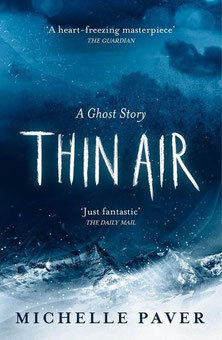 //
// 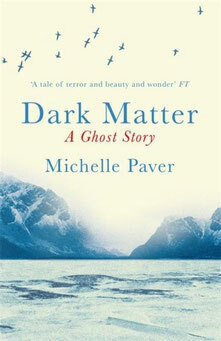 //
// The similarities between these two books by Michelle Paver are striking. They both take place in remote wintry locations, they are both about a group of men who have to face their harsh environment and they are both really, really creepy! Set in 1935, Thin Air is the story of a group of climbers who set off to conquer the Himalayan peak of Kangchejunga. As they travel, are they being affected and confused by the elements? Or is something more sinister going on, something which has been left over from a previous expedition? Meanwhile, in Dark Matter, a 1937 expedition travels to a remote island off the coast of Svalbard to collect scientific readings. One by one, the team befalls a mishap until only one man is left alone to do the work, to face the elements and to defend himself from an angry vengeful presence from the past. Paver's other parallel between the two stories - that of setting them both in the 1930s - means that the characters are without any of the technical support that the modern world can offer, and this only adds to their isolation and fear.
Number 5: The Turn of the Screw (Henry James)
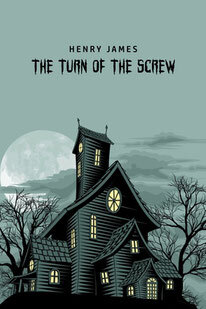 //
// Henry James's story has everything a great ghost story needs: a remote and rambling country house, two orphaned children, Flora and Miles, and a new and enthusiastic governess who is put in charge of them. As she settles into life at the house, the governess begins to see a man and a woman in the house and in the grounds. She learns of the relationship between Miss Jessel, the previous governess, and her lover Peter Quint, and gradually realises that the two people she can see are their ghosts. What's more terrifying for her is that she becomes convinced that the two dead people are communicating through Flora and her brother, and that the children are being drawn into a world of supernatural deviousness and secrecy. Unfortunately, her efforts to save the children from this evil results in tragic consequences.
Maggie Holman loves to read spooky stories but she also writes them. Her paranormal story collection The Wishing Sisters & the stories-within-a-storyThe Things We've Seen are both available at Amazon, along with the supernatural novella The Knocking. Find out more about them @ Books and read extracts for free @ Read for Free. Her short story Watch Out for the Master is included in the Tangle & Fen anthology, released this month by Crone Girls Press.
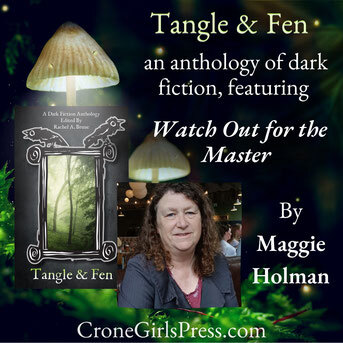 //
// July 25, 2023
People & Books #14: Lucy Karren
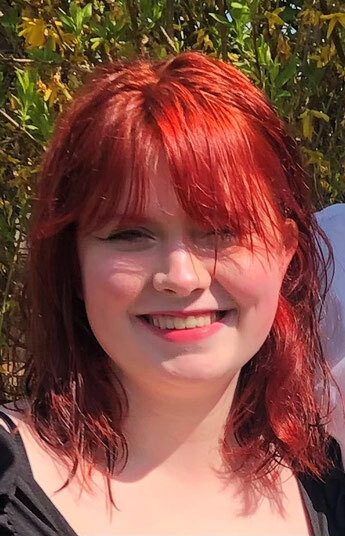 //
//
In my past interviews, at People & Books #3 and #9, I interviewed author Val Karren and his wife, Christine, who publishes Val's books at Fly-By-Night Press. Now there's a new addition to the family's creative activities. Daughter Lucy has written and illustrated her first book. Here she explains how it came about and what inspired this first creative venture.
Which authors do you admire?
My Dad. I think it’s so cool that he took his own experience and added fiction into it to write his first thriller, The Deceit of Riches.
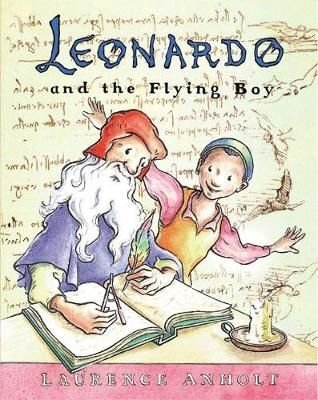 //
//
Were you influenced by any particular books you read when you created Leo & Leo?
There’s a children’s book about Leonardo da Vinci that I drew inspiration from, called Leonardo and the Flying Boy by Laurence Anholt.
Who/What inspired you to write Leo & Leo?
It was actually a school assignment for my art class. I researched Leonardo da Vinci and his life.
What did you enjoy most about writing Leo & Leo?
I enjoyed that I could be as unrealistic and imaginative as I wanted because it’s a children’s book. You also don’t have to use any big/hard words.
 //
//
And what did you learn from your Leo & Leo experience, that might be useful for your future projects?
To work on it regularly because I only barely made the deadline, trying to finish the illustrations.
Have you written any other fiction or non-fiction?
I’ve always liked coming up with stories. But since my Dad became an author, he encouraged me to come up with stories and publish a book. I have unfinished ideas somewhere in the back of my notes app but none that I plan on publishing.
Have you explored – or would you like to explore - various formats e.g. poetry, short stories, graphic novels?
I’ve tried writing songs, which is like poetry in a way. But it isn’t anything I’ve thought about publishing at all. I might think about it more in the future.
Why did you decide to self-publish?
At first I wasn’t planning to publish Leo & Leo, but
my Mom is a publisher* and she offered to publish my book. It seemed like a pretty cool idea.
My teachers also really liked that my assignment was a published book as well. It worked out really well that way.
*at Fly-By-Night Press.
 //
//
What are you working on at the moment?
Lately I haven’t been thinking about it very much because i’ve just graduated school and everything, but I’m thinking about starting a Leo & Leo series. No promises, though.
What are your future plans, writing or otherwise?
I’m starting college in the fall where I’ll be studying illustration. The goal is to become a freelance illustrator and hopefully also continue illustrating my own books.
Do you have any particular writing habits or routines?
Not at the moment. Writing is kind of at the back of my mind at the moment but someday i would like to develop some writing habits.
Do you have any tips for any other young people who might be thinking about writing a book?
Do the research if you’re writing about a real person, even if it’s a fiction book. You do not want to get the facts wrong. And - check for typo’s before you publish!
*
Leo & Leo is available at Amazon. Find out more about Fly By Night Press at: https://flybynightpress.com/
July 22, 2023
A Motorbike & Book Trip - the Perfect Combination!
 //
// Before Covid, my husband and I began to explore Europe via our shared passion, our motobike. Between 2005 and 2019 we travelled to Scotland, Ireland, France, Spain, Andorra, Germany, Belgium, Luxembourg, Denmark and the Netherlands, the country in which we eventually settled. Along the way, we discovered some amazing scenery, great people and interesting historical and cultural places, all reached by motorbike, which is the only way to travel!
As a writer and a reader, it's always fun to try to visit important literary sites on these motorbike holidays. For example, when we were in Dublin, we visited the James Joyce centre to learn more about him and his connection with the city.
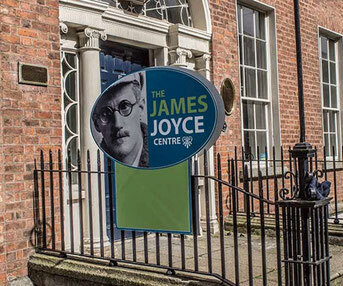 //
// 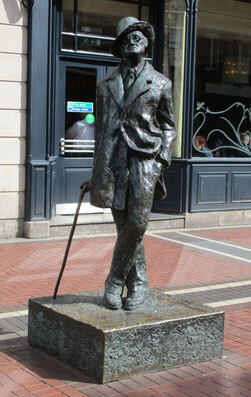 //
// For our 2023 trip, the first big one since Covid, we're heading towards south-east Europe, on a meandering route which might take us through Germany, Austria, the Czech Republic, Slovakia, Hungary, Croatia and northern Italy. We haven't finalised a route yet. After all, we can please ourselves!
One thing's for sure, I'm hoping to visit places which have a literary connection. Here's a few I've discovered in my pre-holiday research:
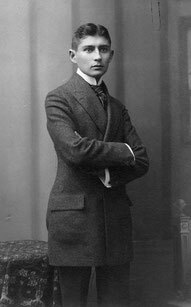 //
//
The Franz Kafka Museum, Prague
Kafka (1883-1924) was born in Prague and is buried there, after he died in a sanatorium in Kierling. The centre's website states that they hold copies of a number of personal documents, such as diaries, correspondence, photographs and manuscripts. The centre also explores the connection between Kafka's writing and how Prague was used as a location in his work. This will definitely be a place to visit if we get to Prague.
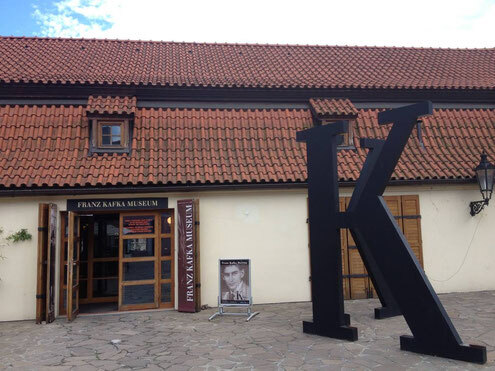 //
// Villa Diodati, Cologny, Switzerland
This mansion is known worldwide for one thing. In 1816, Lord Byron, along with his friends Percy and Mary Shelley, stayed there and famously challenged each other to write a supernatural story, which resulted in Mary's creation, Frankenstein. The mansion has been converted into privately-owned apartments, rather than to some sort of tribute to this literary connection, but it would still be nice to see it.
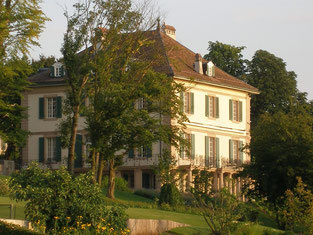 //
// 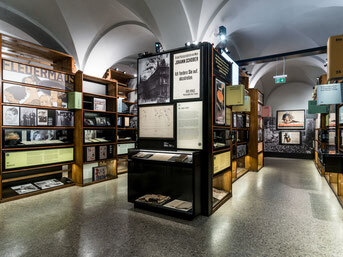 //
//
Literature Musem, Vienna
Located in the building of the former Imperial & Royal Hofkammer Archives, this museum is dedicated to the various authors who have spent time in Vienna over the years, including Nestroy, Schnitzler, Aichinger, Bachmann and Kafka. Its extensive collection covers Vienna's literary connections from the eighteenth century to the present day.
Schiller House, Leipzig
This is the oldest literary memorial in Germany. Friedrich Schiller (1759-1805) was a physician, playwright, poet and philosoper, and a friend of Goethe. The Schiller House was his summer residence in 1795, and now contains many exhibits about his writing and theatrical productions.
 //
// *
These are just a few of the literary locations I've discovered. I can't wait to be travelling by motorbike again and exploring some new places. Perhaps you know of other literary locations that I can include in my summer road trip?
June 14, 2023
People & Books #13: Jenny McLachlan
I'm super privileged to be able to interview children's author Jenny McLachlan. I first met Jenny in London in 2016, when she ran a workshop at the Writing for Children & Young Adults Conference. After trying her hand at literary fiction, Jenny has discovered her talent for writing funny stories for both YA and younger readers. Her new book Stink: WORST. FAIRY. EVER! was released this year. Here she talks about how she began writing and what her writing journey has been so far.
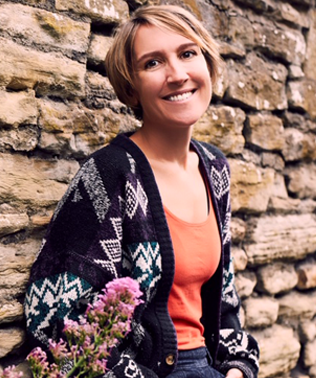 //
// Who/What inspired you to begin writing?
I started writing when my husband and I accidentally booked a mini break in Barcelona that actually lasted ten days. When we had visited all the sights, we bought each other notebooks and started writing mini sagas to entertain each other. Writing stories that were only 100 words long meant I was able to see a real improvement in my writing in just a few days. I think that was the moment when I went from thinking 'I’d love to write a book' to 'I can write a book'.
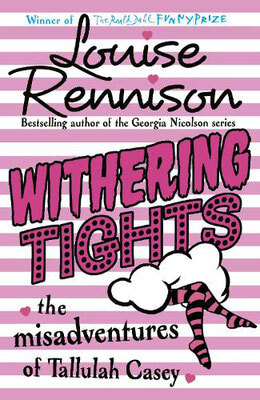
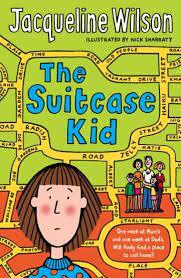
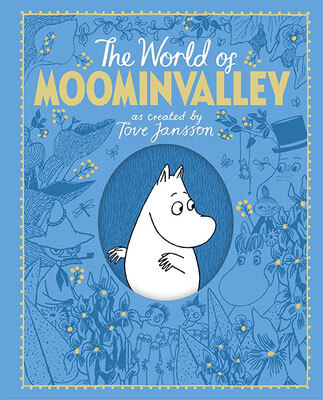 //
// Which authors do you admire?
I admire authors who have an almost uncanny understanding of what children love, want and need, and don’t seem too bothered by what the grown-ups think, for example, Jacqueline Wilson, Louise Rennison, Tove Jansson.
Have you been influenced by any particular books you’ve read?
I don’t think so… but perhaps I can’t tell! I certainly love the magic of Moomin Valley – it’s both cosy and a little bit frightening. This might have crept into Roar.
 //
// 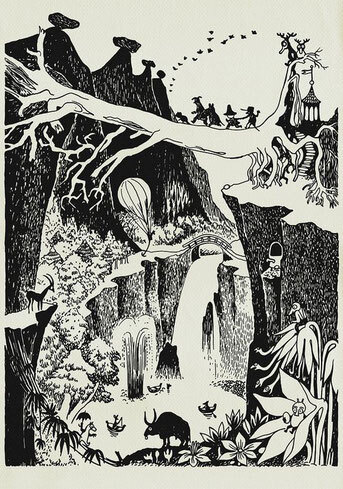 //
// How many books have you written?
12 chapter books and around six early readers.

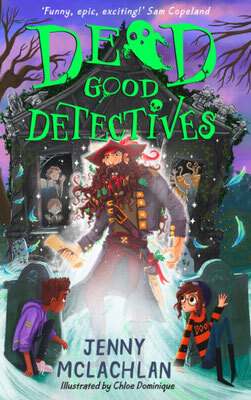
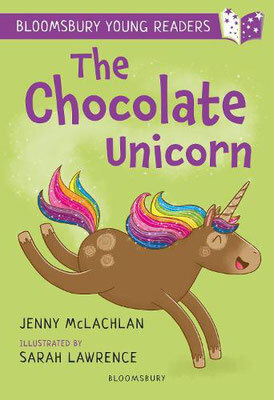 //
//  //
//
What inspired you to write your latest book, Stink?
I was inspired to write my most recent book – Stink – possibly by the stories my dad told me when I was little about a camel called Cuthbert and his tempestuous side-kick fairy. Plus, my children have been very inspiring. I think that a lot of the things Stink does are similar to a toddler’s behaviour – wild, messy and funny!
You were a teacher before you gave up to write full-time. Did this influence your ideas and writing plans?
I spend hours and hours each day wondering how I can communicate something to children and how I can use humour to do this effectively. I think this is very similar to my teaching days!
Do you explore other formats e.g. poetry, short stories, graphic novels?
My current book – Stink – is partly a graphic novel. I illustrated it and I absolutely loved the whole experience. I collect graphic novels and have done for years. I love them.
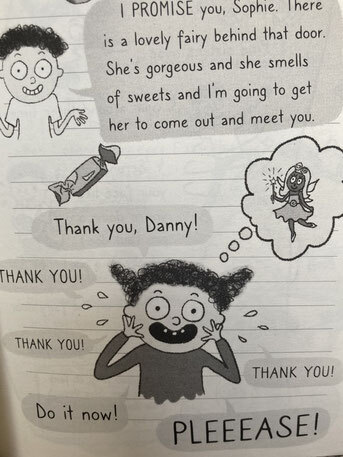 //
// What are you working on at the moment?
I’m currently drawing the illustrations for the second book and working on an exciting secret project!
What are your future writing plans?
I have so many stories in my head. At the moment I’m trying to decide which one I want to develop into a book.
What do you enjoy most about writing?
When I write, I feel like the things I’m describing have actually happened to me. That’s pretty special!
Do you have any particular writing habits or routines?
I spend a lot of time thinking about an idea before I write a plan – sometimes months or years – and then I write a very detailed plan. Usually, for a 50,000 word novel, my plan will be about 10,000 words. When I actually start writing, I don’t feel like I’m making anything up, more that I’m relaying something real.
Do you have any tips for new writers?
Keep searching for your voice. I tried to write serious literary fiction for around five years, but it always sounded forced. The moment I started writing in the first-person for my first teen book - about a teenage girl who falls in love with jive dancing - I knew I had found my voice. I’ve been writing first-person comedy books for children ever since.
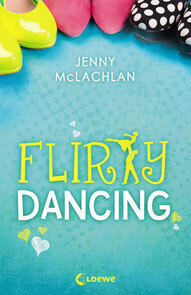 //
// *
For more information about Jenny & her books, go to www.jennymclachlan.com.
Follow Jenny on social media:
Twitter: @JennyMcLachlan1
Facebook: @JennyMclachlan
Instagram: jennymclachlan_writer
June 4, 2023
New Illustrations Bring Forest of Dean Books to Life
I love this image of Molly and the white stag, drawn by Kirsty Boar. If I hadn't moved to Maastricht in 2021, I wouldn't have met Kirsty at all. She's a Maastricht-based author, illustrator and fellow member of the Maastricht Writers Workshop. She has a background in librarianship and when we first met, she was working in the English Bookstore Maastricht.
By this time, I'd already written Footprints in the Snow and Save the White Stag, which are parts 1 and 2 of a Forest of Dean series for children. Over endless cups of coffee, we formulated an illustration plan for these books, and for lots of future projects besides.
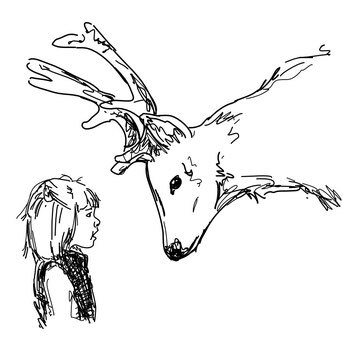 //
// Kirsty felt that a simple black and white line drawing style was best suited to the story context and the forest location. Both stories, although they're stand-alone, do take place in the same locations. Below are the drawings of Grancher Pete's house, the children's secret den and the traveller camp where Caro, Finn and Molly live.
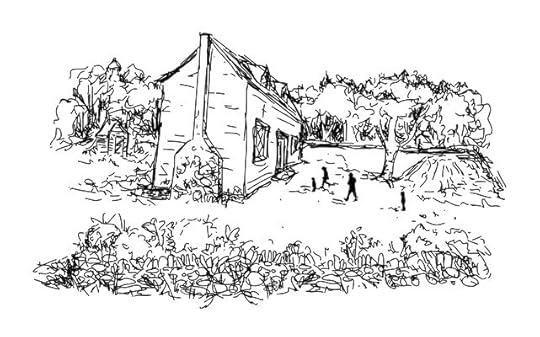
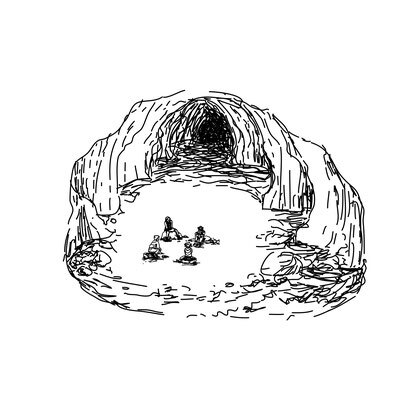
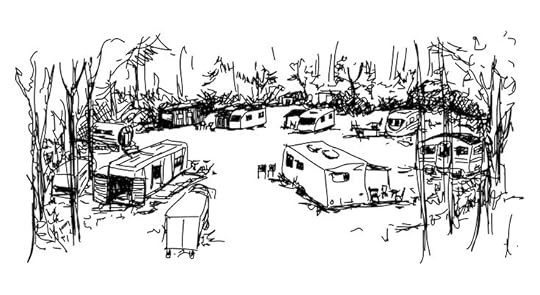 //
// Similarly, the line drawing style is perfectly suited to the visualisation of the main characters. Here are Caro, Finn and Molly on their bikes, Jamie with Grancher Pete and Caro's grandmother Dora:
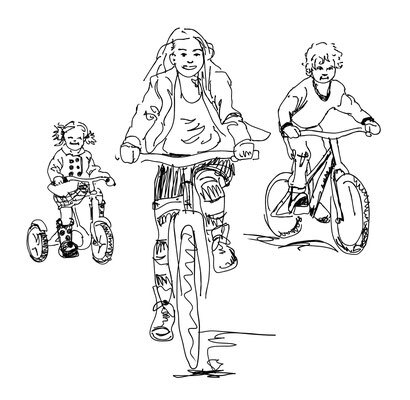

 //
// Both Footprints in the Snow and Save the White Stag involve the children in adventures with animals, but deeper than that, they have a special connection with the animal kingdom. Dora teaches Caro the 'old ways' of the forest, which includes talking to animals and understanding the mysterious 'other world' that exists in it, and the children are aware that they must have a deep respect for the animals around them. In both stories, the animals also have an understanding of this special connection too.
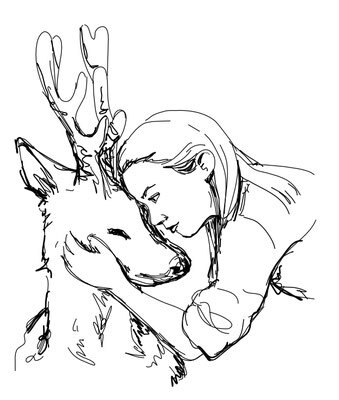
 //
//
The illustrations also serve to add to the emotion of particular moments in the story. For example, in Footprints in the Snow, when there's a heavy snowfall during the night, Jamie is excited and has a lot of fun making a snowman. Grancher Pete tells Jamie not to leave the garden, but he decides to go into the forest to find his friends. In doing so, he becomes lost in the snow-covered landscape and puts himself in danger. The closer-up drawing of Jamie making his snowman, and the distant drawing of him walking through the forest, help to show the change of mood and emotional tone.
 //
//  //
//  //
//
In Save the White Stag, Caro defies her Mum when she tells her she can't stay with the stag in its hiding place. She waits until everyone's asleep and climbs out of her bedroom window. The illustration adds to the emotion of the moment, showing Caro feels strongly enough about her care of the stag to ignore her Mum's instructions.
Now that we're happy with this collaboration, Kirsty and I have plans to work together on parts 3 and 4 of this series. Footprints in the Snow is a winter story, of course, and Save the White Stag is set in the spring. Parts 3 and 4 will be set in summer and autumn respectively, making a full circle of seasonal Forest of Dean adventures!
Watch out for the release of colouring books which will accompany the series.
Thanks for reading.
Maggie
*
Footprints in the Snow and Save the White Stag are both available at Amazon, as paperbacks and ebooks, and are included in Kindle Unlimited.
Find out more about both books at this link:
and read extracts for free here:
www.maggieholman.com/read-for-free/
Associated classroom resources are available at the TpT and TES websites.
Find more about Kirsty & her art work at:
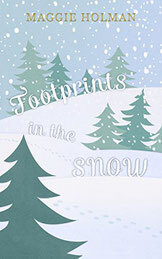 //
// 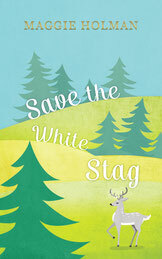 //
// 


